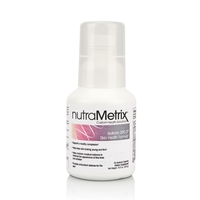Hyaluronic Acid(HA) can be described as "natures moisturizer" and can be found naturally in most every cell in the body and occurs in high concentrations in specific body locations like: Joints, Skin, Hair & Scalp, Eys, Lips and Tendons/Ligaments. In each body location, it serves a different function. Unfortunately, the bodys ability to produce HA decreases with age and also has a half-life ( the time it takes for the molecule to get broken down and excreted from the body) of less than 3 days and possibly even as little as one day in the skin. For this reason, it is imperative that the body continually replenish itself with HA. Below are some of the areas in the human body where it is present and critical to anatomical function.
Hyaluronic Acid in Joints
Hyaluronic Acid in the skin
Although Hyaluronic Acid (HA) can be found naturally in most every cell in the body, it is found in the greatest concentrations in the skin tissue. Almost 50% of the bodies HA is found here. It is found in both the deep underlying dermal areas as well as the visible epidermal top layers. Young skin is smooth and elastic and contains large amounts of HA that helps keep the skin young and healthy. The HA provides continuous moisture to the skin by binding up to 1000 times its weight in water. HA nourishes and hydrates the collagen to keep it moist and elastic. Young skin is smooth and highly elastic because it contains high concentrations of Hyaluronic Acid, which helps skin stay healthy. As we grow older, the body loses its ability to maintain this same concentration in the skin. With decreasing levels of HA in the skin, so goes the ability of the skin to hold water. The result, the skin becomes drier and loses its ability to maintain it's hydration. Hyaluronic acid acts as a space filler by binding to water and thus keeping the skin wrinkle-free. With age, the ability of the skin to produce HA decreases.Hyaluronic Acid in Scalp Tissue and Hair Follicles
Structurally the scalp is identical to the skin tissue located throughout the body except it also contains about 100,000 hair follicles that give rise to hair. Actually the hair and the hair follicle are a derivative of skin tissue. There are two distinctive skin layers, one, the epidermis (outer layer) which gives rise to the protective shield of the body and the other, the dermal layer (deep layer) which makes up the bulk of the skin and is where the hair follicle is located. This dermal layer is composed of connective tissue and the connective tissue, with its gelatinous fluid like characteristics provides support, nourishes and hydrates the deep layers of the scalp. The result is healthy lustrous hair and a moisturized scalp. Again, all of this is made possible because of the presence of HA in the scalp.
Hyaluronic Acid in Eyes
Hyaluronic acid is highly concentrated inside the eyeball. The fluid inside the eye called the vitreous humor is composed almost completely of hyaluronic acid. The HA gives the fluid inside the eye a viscous gel like property. This gel acts as a shock absorber for the eye and also serves to transport nutrients into the eye. HA has been directly injected into the eye during procedures to help maintain the shape of the eye during surgery. It has been said that after the 5th decade of life, our eyes stop producing the much needed hyaluronic acid resulting in various eye needs.
Hyaluronic Acid in
Lips
The lips are a core of skeletal muscle covered by skin tissue. The dermal layer of the lips is composed primarily of connective tissue and its components hyaluronic acid and collagen that give the structure (shape) and plumpness to the lips. The HA binds to water creating a gelatinous fluid that hydrates the surrounding tissue and keeps the collagen (responsible for keeping the skin tight) nourished and healthy. The result is healthy well hydrated and plump lips that are well protected from the environment.
Hyaluronic Acid in Tendons and Ligaments/Connective tissue
Connective tissue is found everywhere in the body. It does much more than connect body parts; it has many forms and functions. Its major functions include binding, support, protection, and insulation. One such example of connective tissue is the cordlike structures that connect muscle to bone (tendons) and bone to bone (ligaments). In all connective tissue there are three structural elements. They are ground substance (hyaluronic acid), stretchy fibers (collagen and elastin) and a fundamental cell type. Whereas all other primary tissues in the body are composed mainly of living cells, connective tissues are composed largely of a nonliving ground substance, the hyaluronic acid, which separates and cushions the living cells of the connective tissue. The separation and cushioning allow the tissue to bear weight, withstand great tension and endure abuse that no other body tissue could. All of this is made possible because of the presence of the HA and its ability to form the gelatinous ground substance fluid.





No comments:
Post a Comment